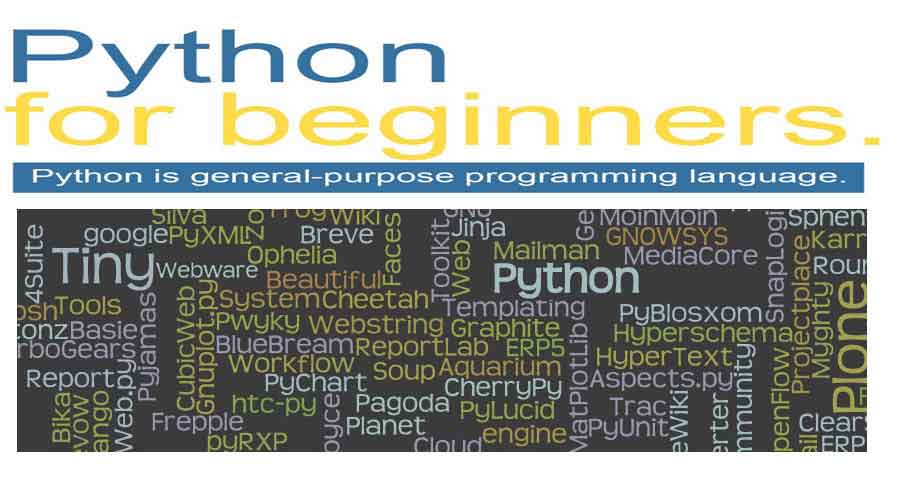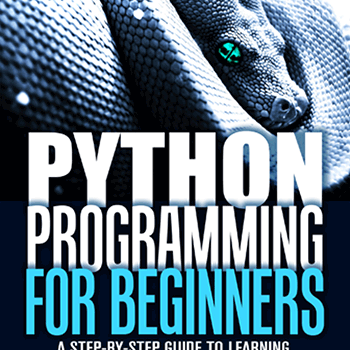
Python programming Language Course Details
You are aware of very basic concepts of python programming language from this basic course. We have more than 7 years of programming in python. Starts with an extremely basic level. If you don't have any knowledge of programming that's going to be fine. By an example, you can learn every concept.
Python today has a demand for grate in industry. So if you learn this language, your dream job will also be helpful! Python is a language that is easy to learn and powerful. The code's size is too small. If you want to create a simple Hello World Java or C program it will take 6/7 line, but in python it's just "hello world" printing!
This Python training course for beginners leads students from the basics of writing and running Python scripts to more advanced features like file operations, regular expressions, working with binary data, and using Python modules ' extensive functionality. Python-specific features such as tuples, array slices, and output formatting are given extra emphasis.
Embedded system applications are mainly written in low level programming languages like C, Assembly etc. Scripting languages like Perl and python are used by embedded developers in following cases:
- Automating tests:
Python is heavily used for writing scripts which trigger and test various parameters of IUT (Implementation under test). You can write a framework which allows writing scripts in python which will send and receive data over serial port to communicate with device firmware. We would also like to point out that the kind of python used here is nothing like that used by web programmers. These scripts mainly focus on exercising various parameters of systems. And once again here also you will find yourself playing a lot with individual bytes/bits thus, using low level list manipulation.
- Parsing logs and providing results at higher abstractions:
Here you use python to parse log files and come up with very high level logs which somebody not familiar with exact system can read and understand. For example you may run tests for a 'Command Interpreter system' at various baud rates and finally come up with a high level result providing information about Baud rate cutoff over or below which system does not work.
Python programming language Highlights
Course Duration
1 month
8 WeekendsLearners
50000
Delivery Mode
Class Room Training
Apply Online

Python Contents
| 1.An Introduction to Python |
 Introduction Introduction |
 A Brief History of Python A Brief History of Python |
 Python Versions Python Versions |
 Installing Python Installing Python |
 Environment Variables Environment Variables |
 Executing Python from the Command Line Executing Python from the Command Line |
 IDLE IDLE |
 Editing Python Files Editing Python Files |
 Python Documentation Python Documentation |
 Getting Help Getting Help |
 Dynamic Types Dynamic Types |
 Python Reserved Words Python Reserved Words |
 Naming Conventions Naming Conventions |
| 2.Basic Python Syntax |
 Basic Syntax Basic Syntax |
 Comments Comments |
 String Values String Values |
 String Methods String Methods |
 The format Method The format Method |
 String Operators String Operators |
 Numeric Data Types Numeric Data Types |
 Conversion Functions Conversion Functions |
 Simple Output Simple Output |
 Simple Input Simple Input |
 The % Method The % Method |
 The print Function The print Function |
| 3.Language Components |
 Indenting Requirements Indenting Requirements |
 The if Statement The if Statement |
 Relational and Logical Operators Relational and Logical Operators |
 Bit Wise Operators Bit Wise Operators |
 The while Loop The while Loop |
 break and continue break and continue |
 The for Loop The for Loop |
| 4.Collections |
 Introduction Introduction |
 Lists Lists |
 Tuples Tuples |
 Sets Sets |
 Dictionaries Dictionaries |
 Sorting Dictionaries Sorting Dictionaries |
 Copying Collections Copying Collections |
 Summary Summary |
| 5.Functions |
 Introduction Introduction |
 Defining Your Own Functions Defining Your Own Functions |
 Parameters Parameters |
 Function Documentation Function Documentation |
 Keyword and Optional Parameters Keyword and Optional Parameters |
 Passing Collections to a Function Passing Collections to a Function |
 Variable Number of Arguments Variable Number of Arguments |
 Scope Scope |
 Functions Functions |
 Passing Functions to a Function Passing Functions to a Function |
 map map |
 filter filter |
 Mapping Functions in a Dictionary Mapping Functions in a Dictionary |
 Lambda Lambda |
 Inner Functions Inner Functions |
 Closures Closures |
| 6.Modules |
 Modules Modules
|
 Standard Modules - sys Standard Modules - sys |
 Standard Modules - math Standard Modules - math |
 Standard Modules - time Standard Modules - time |
 The dir Function The dir Function |
| 7.Exceptions |
 Errors Errors |
 Runtime Errors Runtime Errors |
 The Exception Model The Exception Model |
 Exception Hierarchy Exception Hierarchy |
 Handling Multiple Exceptions Handling Multiple Exceptions |
 raise raise |
 assert assert |
| 8.Input & Output |
 Introduction Introduction |
 Data Streams Data Streams |
 Creating Your Own Data Streams Creating Your Own Data Streams |
 Access Modes Access Modes |
 Writing Data to a File Writing Data to a File |
 Reading Data From a File Reading Data From a File |
 Additional File Methods Additional File Methods |
 Using Pipes as Data Streams Using Pipes as Data Streams |
 Handling IO Exceptions Handling IO Exceptions |
 Working with Directories Working with Directories |
 Metadata Metadata |
 The pickle Module The pickle Module |
| 9.Classes in Python |
 Classes in Python Classes in Python |
 Principles of Object Orientation Principles of Object Orientation |
 Creating Classes Creating Classes |
 Instance Methods Instance Methods |
 File Organization File Organization |
 Special Methods Special Methods |
 Class Variables Class Variables |
 Inheritance Inheritance |
 Polymorphism Polymorphism |
 Type Identification Type Identification |
 Custom Exception Classes Custom Exception Classes |
| 10.Regular Expressions |
 Introduction Introduction |
 Simple Character Matches Simple Character Matches |
 Special Characters Special Characters |
 Character Classes Character Classes |
 Quantifiers Quantifiers |
 The Dot Character The Dot Character |
 Greedy Matches Greedy Matches |
 Grouping Grouping |
 Matching at Beginning or End Matching at Beginning or End |
 Match Objects Match Objects |
 Substituting Substituting |
 Splitting a String Splitting a String |
 Compiling Regular Expressions Compiling Regular Expressions |
 Flags Flags |
| 11.Why you should already know about Python |
 Introduction Introduction |
 Language Evolution Language Evolution |
 Python Reserved Words and Other Rules Python Reserved Words and Other Rules |
 Documentation Documentation |
 The string Module The string Module |
 Variables Variables |
 Data Types Data Types |
 Boolean and Numeric Types Boolean and Numeric Types |
 Strings Strings |
 Lists Lists |
 Sets Sets |
 Sequences Sequences |
 Looping Through Sequences Looping Through Sequences |
 Dictionaries Dictionaries |
 Bit Manipulation Bit Manipulation |
 Functions Functions |
 Function Arguments Function Arguments |
 Modules Modules |
 Standard Input and Output Standard Input and Output |
 File Input and Output File Input and Output |
 Some File Tests Some File Tests |
| 12.Data Structures |
 List Comprehensions List Comprehensions |
 Nested List Comprehensions Nested List Comprehensions |
 Dictionary Comprehensions Dictionary Comprehensions |
 Dictionaries with Compound Values Dictionaries with Compound Values |
 Processing Lists in Parallel Processing Lists in Parallel |
 Specialized Sorts Specialized Sorts |
 Time Functionality Time Functionality |
 Generators Generators |
| 13.Writing GUIs in Python |
 Introduction Introduction |
 Components and Events Components and Events |
 An Example GUI An Example GUI |
 The Tk Widget The Tk Widget |
 Button Widgets Button Widgets |
 Entry Widgets Entry Widgets |
 Text Widgets Text Widgets |
 Checkbutton Widgets Checkbutton Widgets |
 Radiobutton Widgets Radiobutton Widgets |
 Listbox Widgets Listbox Widgets |
 Frame Widgets Frame Widgets |
 Menu Widgets Menu Widgets |
 Toplevel Widgets Toplevel Widgets |
 Dialogs Dialogs |
